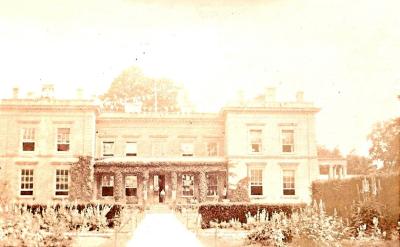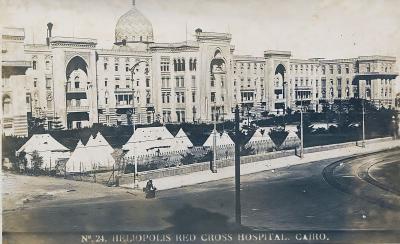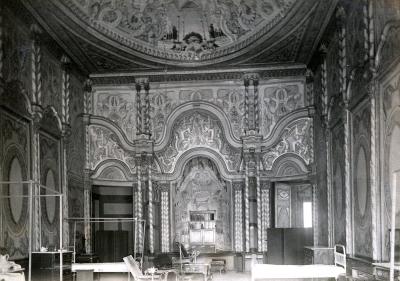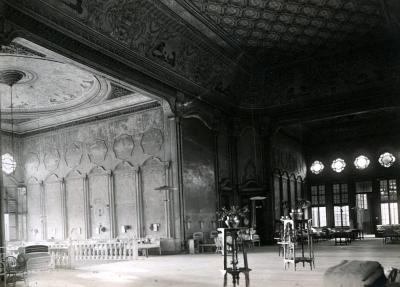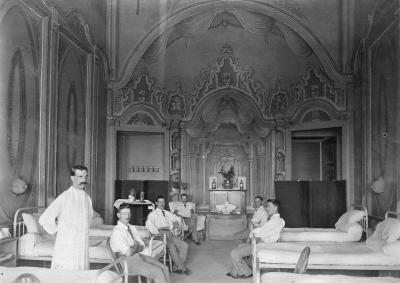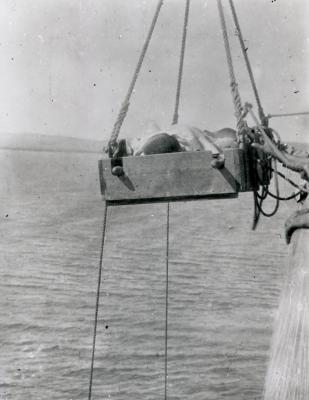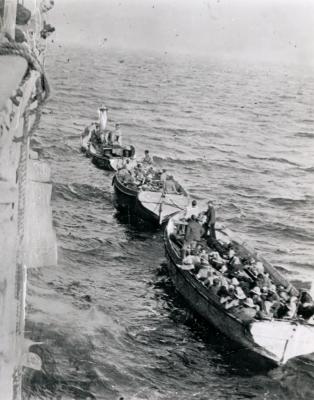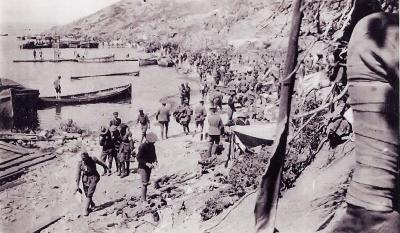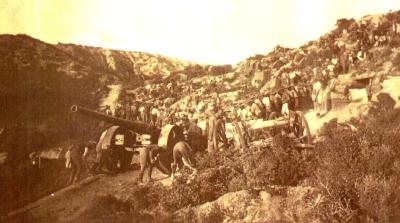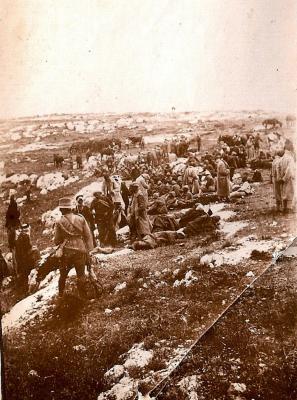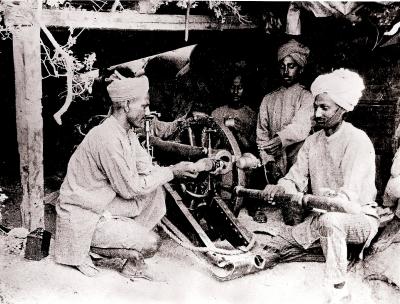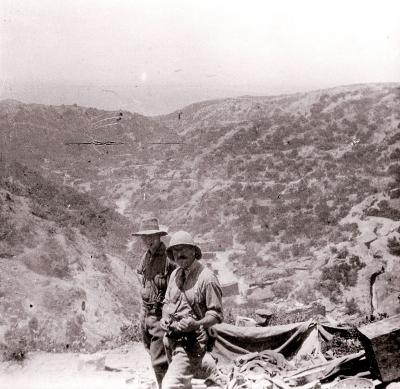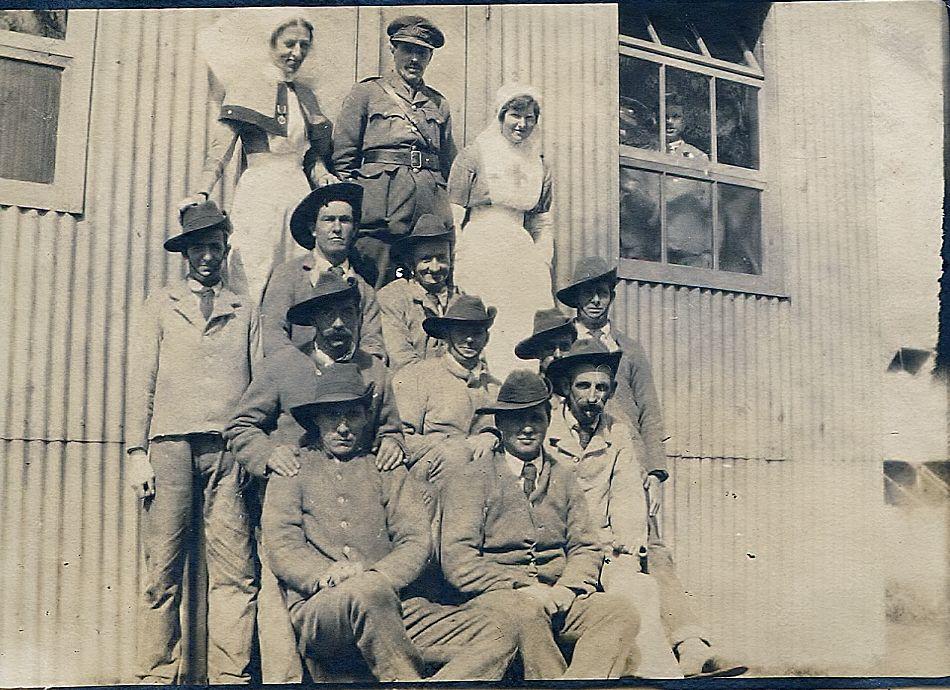World War 1, Europe, England, Sutton Veny, YMCA Greenhill House, 11 Battalion, 1917
1917Wounded soldiers with nurses at Sutton Veny
The proximity of Sutton Veny to Warminster and Salisbury Plain ensured that Sutton Veny and the surrounding villages in the upper Wylye Valley area, was an ideal location to barrack troops in order for them to train prior to deploying to northern France. Supplies arrived via the Salisbury to Warminster railway line, and in November 1914 a railway spur from Heytesbury was laid the few miles to Sutton Veny to convey camp building materials and water for the troops. Approximately 10 Camps were built around Sutton Veny.
Both sides of the Norton Road from Leys Lane were trenches, and troops would live in them for a week at a time with food being brought out as would occur in war. Village women took in soldiers' laundry, and several snack shops and tea huts were built.
In 1916, a hospital camp opened for 11 officers and 1261 soldiers between Bishopstrow and Sutton Veny, and in December that year No 1 Australian Command Depot moved to Sutton Veny where it remained until 1919. After the Armistice, No 1 Australian General Hospital was transferred to Sutton Veny where it remained until the end of 1919.
There were also some Australians in Codford with the New Zealand contingent, and there are the graves of 31 Australians in the Codford St Mary New Churchyard. The Australians cut a reproduction of their badge out of the chalk on the hillside above Foxhole Bottom alongside the A36 which can still be seen today.
Greenhill House (Sutton Veny House today) was a YMCA for the many Australian troops in the area. Publicity from those times describes Greenhill House as :
"Situated in the midst of the largest Australian Imperial Force training and convalescent depots in Great Britain, this mansion, containing over 50 rooms and with spacious lawns and grounds, offers ideal possibilities for rest and recuperation for war weary troops. The Home and grounds are now in the possession of the of the Australian YMCA and present a homelike aspect to Officers, NCOs and men respectively"
In late 1918 and 1919 Spanish influenza was particularly virulent and many Australians and prisoners of war died. The names of 142 Australians and 2 sisters are recorded in the Australian Chapel in St John's Church and are interred in the churchyard. This part of the graveyard has been classed an Australian War Cemetery.
In 1919 the village began to return to normal. The Australians formed an agricultural training depot at Sutton Veny in order to prepare and train their soldiers for returning to civilian life. By mid 1919, 2000 Australian soldiers had been trained. At the end of that year the Australians returned home, the huts were demolished, the Camp railway lifted, and the peace and tranquillity of village life returned. There is a yearly memorial service held on the Sunday closest to the Anzac Day (25 April) in St John's Church, Sutton Veny.
Details
Details
The YMCA was founded in 1844 during the Industrial Revolution in England, a time of great despair and poverty. George Williams, a drapery merchant, decided that something had to be done. He gathered together a few friends to form a society that met regularly to support each other and gain renewed strength in body, mind and spirit. The group called itself the Young Men's Christian Association (YMCA).
The official opening of the YMCA association in Western Australia, based in the Eastern Goldfields was in 1902. Perth soon followed suit with its first association official formed in 1908, after receiving a donation of land on Murray Street in the city. Throughout its history YMCA Perth has held a focus on working with young people through activities such as sports, camps, arts, leadership programs and services such youth work and youth hostels. From 1914-1918, YMCA Perth provided services in a peacetime military camp and for armed services in Australia and war fronts. During the depression YMCA Perth helped in the sustenance of workers, held classes for unemployed young people and provided an employment bureau. From 1940-1945, YMCA Perth staff and volunteers help servicemen and women in war, and from 1946-1961 continue to proved service to peacetime armed services and trainees.
Open in Google Maps
Nearest geotagged records:
Australian Army Museum of Western Australia
Australian Army Museum of Western Australia
More items like this
Other items from Australian Army Museum of Western Australia
- World War 1, Middle East Egypt Cairo, Australian Army Nursing Service 1915
- World War 1, Middle East Egypt Cairo, Australian Army Nursing Service 1915
- World War 1, Middle East Egypt Cairo, Australian Army Nursing Service 1915
- World War 1, Middle East, Egypt, Cairo, Australian Army Nursing Service 1915
- World War 1, Middle East Egypt Cairo, Australian Army Nursing Service 1915
- World War 1 , Europe Türkiye Gallipoli, Anzac Cove, 1915
- World War 1, Europe, Türkiye, Gallipoli, Anzac Cove, 1915
- World War 1, Europe, Türkiye, Gallipoli, Anzac Cove, 1915
- World War 1 , Europe Türkiye Gallipoli, Anzac Cove, 1915
- World War 1, Middle East, 10 Australian Light Horse, 1918
- World War 1 , Europe Türkiye Gallipoli, Anzac Cove, 1915
- World War 1, Europe, Türkiye, Gallipoli, 1915
